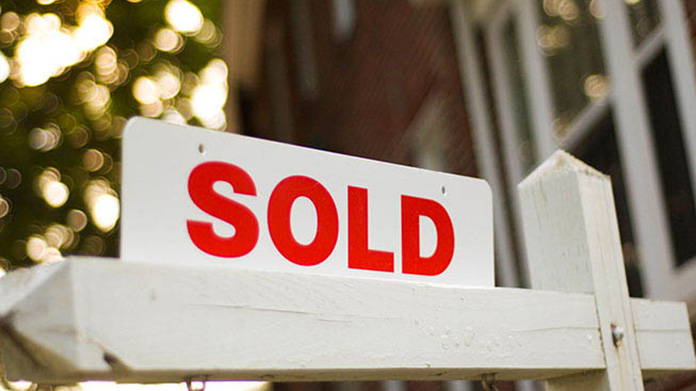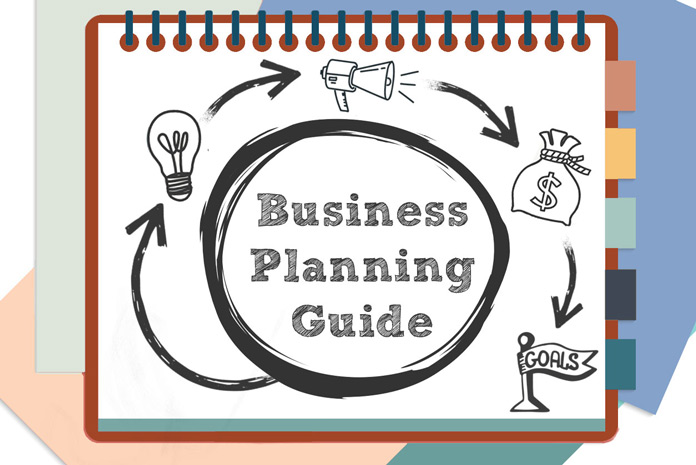How to Start Flipping Houses
Flipping houses can be a rewarding and lucrative real estate investment. But not everyone knows how to start flipping houses.
Our beginner’s guide to flipping houses walks you through how to flip a house in six easy steps.
Recommended: Be sure to read our guide to How to Start a Real Estate Investing Business.

Learn to Flip a House in 6 Easy Steps
As a new house flipper, you will need to research and understand your market, repair costs, and property value. You’ll want to improve your networking skill and start connecting with everyone else in the business – from contractors to other investors. House flipping requires time, money, and research in order to be successful, but also offers substantial rewards.
To get started, here are the six steps to flip a house:
Step 1: Find a House to Flip
Step 2: Evaluate the Property
Step 3: Finance the Purchase
Step 4: Flip the House (Renovate the House)
Step 5: Market Your Real Estate Listing
Step 6: Sell Your Property
By systematically following these steps, you can achieve your first successful house flip in under 6 months. The key is to carefully evaluate improvement and operational costs and account for after renovation value. Experienced house flippers and contractors can help facilitate this process, especially in your first house flips.
Learn the six steps of successful house flipping to prepare for your first house flip.
Step 1: Find a House to Flip
The first step to flipping houses is to find a property within your budget that will provide a return on investment that meets or exceeds your financial goals. To do this, follow these steps:
Research Different Markets and Select Target Neighborhoodss
Where you buy a house to flip is as important as the type of house you purchase. You want to thoroughly research and identify target neighborhoods. As a house flipping beginner, it is a good idea to keep your search local. Local knowledge and contacts will make the process easier, and you’ll save driving time when looking for properties.
Here are some tips to help you find the right neighborhoods to start your house flipping business:
- Look for mid-range properties for the best balance of risk and return. You don’t want to start your first house flip with a high end property that will require more capital for luxury finishes. Very low end properties offer small returns, which means that it is easy to underestimate your expenses and eat up your profit. Mid-range properties give the greatest advantage and potential for return.
- Search for areas where houses are selling within days or weeks. You can work with an investor-friendly real estate agent to check the multiple listing service (MLS). Look for neighborhoods where houses are selling quickly. Neighborhoods experiencing new growth or development are also often good target neighborhoods.
- Look for neighborhoods with two or more price points. This indicates that you can buy at the lower price, renovate, and sell at the higher price.
- Choose a neighborhood that is safe and has as many desirable features as possible. Look for retail and office space, community spaces and green spaces, as well as proximity to major cities or major business centers.
- Know the amount of money you have to work with as well as your ideal return on investment (ROI), and search for a corresponding area.
- Start small and reinvest. With your first real estate investment, it is a good idea to start with a lower-risk property. This is a property in your target neighborhood that needs mostly cosmetic repairs. You’ll need a smaller investment, but will become familiar with the process of house flipping.
Start the Search for Discounted Properties
To achieve a high return on investment and stay within your budget, look for properties at the lowest price point within your target neighborhood. This can include properties in foreclosure, disrepair, or in need of an update. There are several ways to find cheap houses to flip:
- Hire a “bird dog.” A “bird dog” is someone that will forage for good property deals in exchange for a finders fee. A bird dog will supply the address, phone number, and seller name. Compensation is typically a flat fee or percentage of the sale at close.
- Purchase through a wholesaler. A real estate wholesaler is someone who finds and secures properties to transfer to other real estate investors for a commission. To find a wholesaler, network via local meetups, or go online to find wholesalers in your area.
- Use an investor-friendly realtor. This is a real estate agent that will understand your situation and point you in the direction of target properties for a quick, easy sale. You will have to pay a fee for their services, which is typically around 4% of the sale.
- Generate property leads yourself. It is a good strategy to start generating property leads as soon as you decide to start a house flipping business. Lead generation strategies include prospecting, advertising, and networking.
- Prospecting means searching for the properties yourself. You can prospect in the MLS, in foreclosure lists, in classified ads, and by driving around your target neighborhood.
- If you have the time to dedicate to your property search, you can start by dedicating about three hours a week to “driving for dollars”. You will drive around your target neighborhood searching for a number of distressed properties to inquire about.
- Advertising can be done through online listings, in local papers, and even on benches at bus stops. This is the slowest way to generate leads, but with consistency and tweaking, can lead to good results in 6 months to one year.
- Networking will pay the greatest dividends in the long run. Connect with everyone associated with the house flipping business: other investors, contractors, title companies, real estate agents, lenders, residents of your target neighborhood, etc.. It’s a good idea to join a local Real Estate Investment Association (REIA) to network and generate leads.
- Prospecting means searching for the properties yourself. You can prospect in the MLS, in foreclosure lists, in classified ads, and by driving around your target neighborhood.
Recommended: For more information about finding deep-discounted properties, read our tips on finding off-market properties in our guide to starting a real estate wholesaling business.
Step 2: Evaluate the Property
Once you’ve found a house to flip in your target neighborhood, the next step is to evaluate the property. This is essential to determine whether the property is a good investment. Evaluation is the most important step in house flipping. It can make the difference between profit and loss. To evaluate the property, you will start by doing a walkthrough.
Prior to doing a walkthrough, there are a few steps you should take to prepare:
- Learn how to identify improvements and the cost of renovation. Learn the prices of materials and labor for every project, from new flooring to paint, roofing, and plumbing. You need information about repair costs at your fingertips to make educated estimates about the cost of repairs.
- Calculate your maximum offer price based on different repair levels. That way, once you know what type of renovation you are working with, you will be prepared with an offer.
- Bring a drafted offer contract with you. Be sure to have this document assessed by your real estate attorney prior to the walkthrough.
- Do your due diligence before you walk through the property. If the property is in your target neighborhood, you should already know the potential value after repairs. Keep in mind the current market value and your final sale price after renovation.
Walk Through the Property
Schedule your walkthrough with a general contractor. They will help you make a quick and accurate assessment of necessary renovations. While walking through, ensure that the property is structurally sound. Make sure to check all major systems including HVAC, electrical, and plumbing, and assess the renovation cost of deferred maintenance.
Keep a detailed list of the repairs required to renovate the property, as well as additional cosmetic upgrades like new flooring or new paint.
Calculate your minimum profit
Once you have an estimate of renovation costs, you will need to account for the operational costs required during renovation, as well as the costs of buying and selling the property.
On the basis of these costs, you can calculate your minimum profit and your maximum offer. Once you’ve double and tripled checked all the calculations, you are ready to arrange financing and make an offer.
Step 3: Finance the Purchase
You should start networking and arranging financing before you find a house to flip. This step can start from the day you decide to start a house flipping business. Financing can be arranged through private or institutional lenders.
For the most flexibility and speed of financing, private individual lenders are the preferred choice. It is worthwhile to start reaching out to other real estate investors for possible funding, and line up several options. It is also good to get pre-approved for a mortgage in case you decide to use institutional lenders.
Make an Offer
Once you have financing in place, and know your maximum offer value, you are ready to make the offer. It is important to speak with your real estate attorney before signing or drafting a contract. Here are some things to keep in mind before making your offer:
- The after repair value (ARV) of the property. In order to make this a lucrative house flip, your offer should be between 40-60% of the ARV.
- The price of recently sold properties within a mile radius or in your target neighborhood. Compare properties with a similar layout, size, style, level of finish, and acreage.
- Your minimum profit and maximum offer price calculations, based on the purchase price, after repair value, and renovations costs. Make sure to do the calculations and double-check your estimate.
Recommended: Learn more about how to finance house flipping with our guide.
Step 4: Flip the House (Renovate the House)
Once you have purchased the property, renovation begins. You can estimate how long this will take based on the level of renovation and the cost per square foot of repairs. Simple renovations can be completed in under a month. More complex repairs take longer and vary from project to project. Unless you have the skills to perform the renovation yourself, your best strategy is to hire a general contractor.
Using a Contractor vs. Doing the Renovation Yourself
Before deciding whether or not to do the rehabilitation yourself, there are some important questions to ask yourself:
- Do I have the knowledge and experience for this renovation?
- Do I have all the materials required?
- Do I need additional help for bigger and more labor-intensive projects?
Using contractors may cost more, but they also offer many benefits. Contractors typically get discounts on materials, get the job done faster, and ensure you stay within budget. If you aren’t experienced in construction, using a contractor can save you time and leverage your resources.
How to Find Contractors
The best way to find a good contractor is through a recommendation. Ask other house flippers who they use and recommend. Once you have one good contractor, you can ask them to recommend others.
Your priority is to build a strong network of contractors to work on a variety of projects simultaneously. Contractors you may need include general contractors, electricians, roofers, plumbers, painters, HVAC professionals, or low-cost handymen. A general contractor will help to ensure smooth workflow.
Building a group of trusted contractors to get the job done efficiently ensures continued house flipping success. Pay them well and treat them well, and you will be rewarded with excellent, efficient work on your future projects.
Here are some other tips to find contractors in your area:
- Ask around the real estate community. Utilize real estate investor forums and communities in your area to ask about contractors they know and trust.
- Read reviews and shop around before committing to one company or contractor. Don’t just go with the first contractor you talk to. Explore your options before settling. It is worthwhile to know a few good contractors so you can maintain your workflow when one is on another job.
Things to Keep in Mind When Hiring Contractors
As with any contractual relationship, hiring a contractor to renovate your property will require the help of an attorney. We recommend that you go through any legal documents with your real estate attorney prior to signing a contractor onto your project.
In addition to this, you should consider filing a waiver of liens. This is a document that states the contractor will have no right to claim property or assets to satisfy a debt. Once the contractor is done and the final payment for their services is complete, ask them to sign this document.
Step 5: Market Your Real Estate Listing
Now that you’ve successfully renovated the property, it’s time to put it on the market to sell. It is recommended to work with a real estate agent to sell your property. They will take care of a great deal of the leg work required to market your property, as well as ensuring all documentation and titles are in place.
You should find an investor-friendly real estate agent who is well-versed in selling flipped houses. They will have the expertise to help with the sale, and get it done quickly.
Once you have successfully flipped a few houses, you can consider getting your realtor’s license. This will allow you to do the final marketing and sale yourself, and save the 2-3% your realtor takes from the sale. However, as a real estate investor, your time is usually better spent locating new houses to flip and arranging financing.
Step 6: Sell Your Property
This is the finish line of your house flipping journey. The final sale will be largely handled by your investor-friendly real estate agent. Expect to spend 6.5% to 7.5% in closing fees and agent fees for both for your real estate agent and for the buyer’s agent.
It is good to be familiar with the selling process in order to advocate for the best interests of your new business. Know your after renovation value. Make sure you have priced the property appropriately for the neighborhood and the level of renovations. With prior research and knowledge of your target neighborhood, you have set yourself up for success with a fast sale and a good return on investment.
Recommended: For more information on how to draft a real estate contract for wholesaling, check out our guide.
Grow Your Business
Once you have successfully flipped your first house, you can use the same formula to flip more houses in the same target neighborhood. You can take a profit, and also reinvest some of your earnings to expand your house flipping business. Now you have the skills and resources to grow your business.
We recommend that you flip a few houses before altering your business model to include different property types or markets. When you have a formula that works, stick with it. As you become more confident in your ability to flip houses, you can expand to multiple house flips at the same time.
With persistence, you will not only master your house flipping skills, but build a lucrative real estate investment business. Through networking and supporting others in the business, you will gain a reputation for creating win-win situations and providing excellent returns. There is no limit to how much your real estate business can grow through consistent application of these six simple steps.





